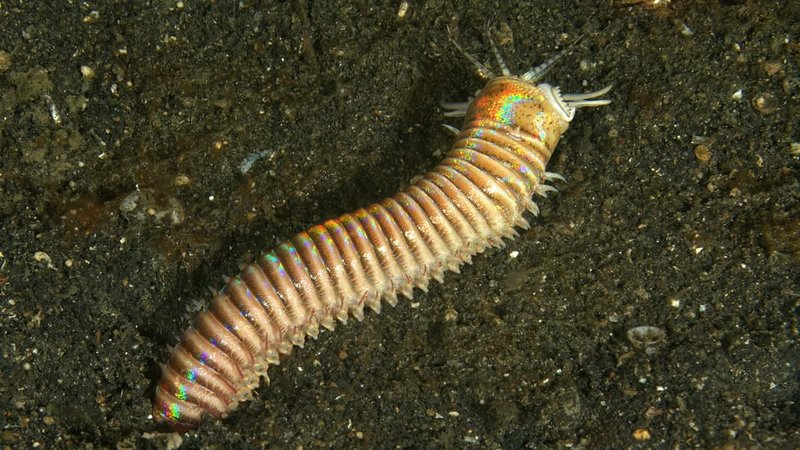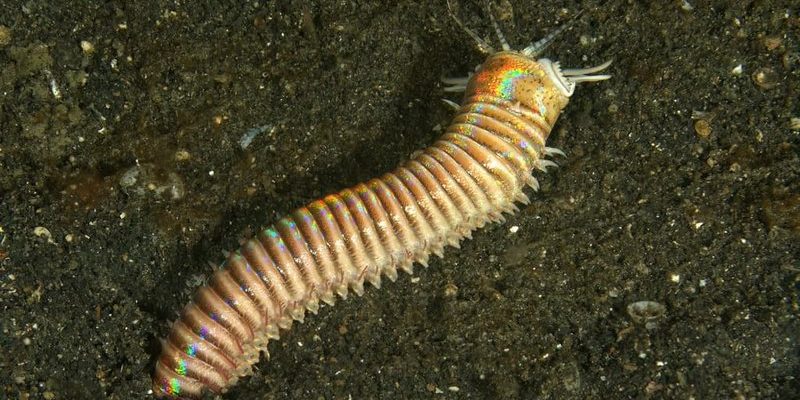
Imagine a thin, vibrant snake that pops out of the seafloor and snatches unsuspecting fish in a split second—that’s the Bobbit worm for you. They use their sharp jaws to capture prey and can even grow several feet long. Today, let’s dive into the world of Bobbit worms, looking at the different species you can find globally, how to identify them, and why they matter in our oceans.
What Are Bobbit Worms?
Bobbit worms, scientifically known as *Eunice aphroditois*, belong to a family called **Eunicidae**. They are marine polychaete worms that can be found in tropical and subtropical waters worldwide. What’s really fascinating about these creatures is their ability to camouflage into their surroundings. They burrow into the sand or mud, leaving only their colorful tentacles exposed. This makes them excellent ambush predators, waiting patiently for fish or crustaceans to swim too close.
These worms can grow up to 10 feet in length, though most remain under 3 feet. Their bodies are segmented, which helps them move swiftly through sand or mud. And yes, they can regenerate lost body parts—a handy trick when they face threats!
You might be wondering about their diet. Bobbit worms feed on various marine organisms, mainly fish and crustaceans, using their strong jaws to latch onto prey. Once caught, they pull their meal into their burrow, which can be quite a sight if you’re lucky enough to witness it!
Common Bobbit Worm Species
While the most recognized species is *Eunice aphroditois*, there are several other Bobbit worm species to be aware of. Here’s a quick rundown of some of the notable ones:
- *Eunice aphroditois*: The classic Bobbit worm, known for its vibrant colors and impressive length.
- *Eunice gigantea*: Found in the Indian and Pacific Oceans, this species can reach lengths up to 5 meters.
- *Eunice roussaei*: This species is typically smaller and often resides in sandy substrates.
Each of these species has unique traits, but they all share the common Bobbit worm characteristics that make them fascinating to both marine biologists and ocean enthusiasts.
How to Identify Bobbit Worms
Identifying Bobbit worms can be tricky due to their ability to blend in with their surroundings. However, there are a few key features to look for:
– **Coloration**: Bobbit worms can be strikingly colorful. You’ll often see shades of green, red, blue, or orange along their bodies. This coloration can also vary depending on their environment.
– **Tentacles**: When they poke out of their burrows, look for long, feathery tentacles that resemble palm leaves. These tentacles are used for both feeding and sensing the environment.
– **Body Segments**: Bobbit worms have a segmented body, which gives them flexibility and agility as they navigate their habitats.
When looking for these worms, keep in mind that they can retract quickly if they sense danger. So, patience is key if you want a closer look!
Bobbit Worm Behavior and Habitat
Bobbit worms are primarily nocturnal. During the day, they tend to stay hidden, while at night, they become more active and hunt for food. They often create U-shaped burrows in soft sediments, which serve as both a hiding spot and a strategic place for ambushing prey.
Their habitat mainly includes coral reefs, muddy bottoms, and sandy substrates. These environments provide ample opportunities for hunting and a rich supply of food. Because they can thrive in various marine conditions, Bobbit worms play a vital role in the ecosystem, helping to maintain balance by controlling fish populations.
One interesting fact is that despite their size and predatory nature, Bobbit worms have few natural predators. However, larger fish, sea stars, and some species of crabs can pose a threat. Their ability to hide effectively helps them avoid being eaten.
The Role of Bobbit Worms in Marine Ecosystems
Bobbit worms are more than just fascinating creatures with jarring jaws; they play a crucial role in marine ecosystems. By preying on various fish and crustaceans, they help regulate populations, keeping the ecosystem balanced.
When Bobbit worms hunt, they often stir the sediment, which in turn provides oxygen and nutrients to other organisms in the environment. This process promotes healthy growth in marine life, demonstrating how interconnected these systems are.
Additionally, their burrows can provide shelter for smaller creatures, creating microhabitats that offer protection. So, even though they may seem intimidating, Bobbit worms contribute positively to the health of their underwater neighborhoods.
Interesting Facts About Bobbit Worms
Bobbit worms have plenty of quirks that make them unique. Here are some cool things you might not know:
– **Regeneration**: If a Bobbit worm loses a segment, it can regenerate that part over time. This means they can recover from injuries that could be fatal for other creatures.
– **Speedy Attack**: The way they capture prey is truly impressive. When a fish comes too close, a Bobbit worm can strike in less than a second, showcasing their lightning-fast reflexes.
– **Size Variability**: While some Bobbit worms are relatively small, others can reach over 10 feet long! Imagine a worm that long lurking beneath the ocean floor.
These intriguing traits make Bobbit worms a subject of study for many marine biologists, who continue to uncover the mysteries of these remarkable creatures.
How to Observe Bobbit Worms Safely
If you’re interested in observing Bobbit worms, whether snorkeling or diving, here are some tips for a safe and respectful experience:
1. **Stay Calm**: When swimming in their territory, keep your movements slow and deliberate. This minimizes disturbance and increases your chances of spotting them.
2. **Don’t Touch**: Although they may look inviting, it’s best to observe them from a distance. Touching these worms can harm both you and them.
3. **Use a Camera**: Capture the moment with photos instead of physically interacting with the worm. This way, you can share your experience without causing harm.
Bobbit worms are incredible animals, and observing them in their natural habitat can be an unforgettable experience if done responsibly.
Bobbit worms are not just fascinating underwater creatures; they play vital roles in maintaining the health of marine ecosystems around the world. With their impressive hunting skills, vibrant colors, and intriguing behaviors, it’s no wonder these worms capture the attention of marine enthusiasts and researchers alike.
Whether you’re planning to explore their habitats or just learning about them from afar, understanding the different species of Bobbit worms and their importance in our oceans can deepen your appreciation for marine life. So, the next time you catch a glimpse of a Bobbit worm, you’ll know there’s much more to this incredible creature than meets the eye!

